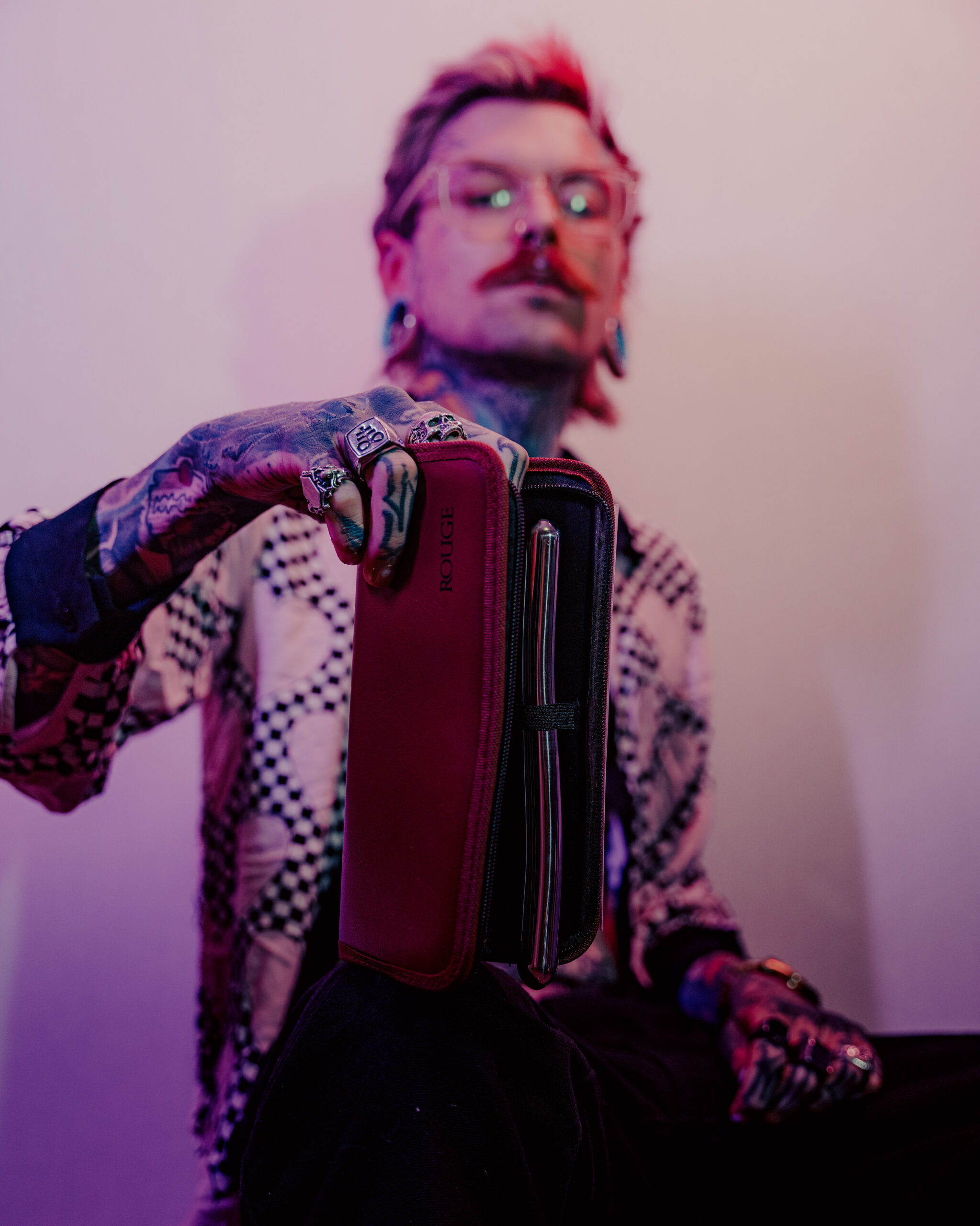Defining Pansexuality
Pansexuality is a sexual orientation characterized by romantic or sexual attraction to people regardless of their gender identity or expression.
The term “pansexual” comes from the Greek words “pan,” meaning “all,” and “sexual,” referring to sexuality. It encompasses attraction to individuals who identify as male, female, transgender, non-binary, genderfluid, agender, and all other gender identities.
It’s important to distinguish pansexuality from bisexuality. While both orientations involve attraction to more than one gender, bisexuality traditionally refers to attraction to two genders: typically male and female. Pansexuality, on the other hand, extends beyond the binary categorization of gender, encompassing attraction to all genders.
Pansexual individuals may experience romantic or sexual attraction to people who present in ways that are traditionally associated with both masculine and feminine genders.
They may also be attracted to individuals who do not conform to traditional gender norms.
Understanding pansexuality requires recognizing that:
* **Gender identity is distinct from sexual orientation.** A person’s gender identity is their internal sense of self as a man, woman, both, neither, or somewhere else on the gender spectrum. Sexual orientation describes who a person is attracted to.
* **Gender expression is fluid and diverse.** Gender expression refers to how an individual chooses to present themselves outwardly through clothing, behavior, mannerisms, etc. It can align with, or differ from, societal expectations associated with their assigned sex at birth.
The pansexual community celebrates diversity and challenges traditional notions of gender and sexuality.
It emphasizes the fluidity and spectrum of human experience, recognizing that attraction and love transcend rigid categories.
Pansexuality is a sexual orientation characterized by romantic, emotional, and/or sexual attraction to people regardless of their gender identity or expression.
It’s important to distinguish pansexuality from bisexuality, which typically refers to attraction to two genders: usually male and female. Pansexual individuals may be attracted to all genders, including transgender, non-binary, and genderfluid individuals.
Here are some key aspects of defining pansexuality:
-
Attraction beyond the gender binary:
-
Inclusivity and acceptance:
-
Fluidity and personal experience:
Pansexuality encompasses attraction that extends beyond the traditional categories of male and female. It recognizes that gender is a spectrum and that individuals can identify with multiple genders or no gender at all.
A core principle of pansexuality is inclusivity and the acceptance of all genders. Pansexual people value diversity and see gender as an integral part of a person’s identity, but not as a determining factor in their attraction.
Like any sexual orientation, pansexuality can be fluid and evolve over time. Individuals may experience shifts in their attractions or understandings of their own gender identity as they grow and learn.
Pansexuality is an integral part of queer culture, representing a celebration of diverse identities and relationships. It challenges rigid societal norms around gender and sexuality, advocating for acceptance and understanding of all individuals, regardless of who they are attracted to.
Pansexuality and Queer Culture
Pansexuality is an orientation characterized by romantic, sexual, or emotional attraction to people regardless of their gender identity or expression.

Unlike some other orientations that may focus on specific genders, pansexuality encompasses a wide spectrum of identities, including men, women, transgender individuals, non-binary people, and anyone else who falls outside the traditional gender binary.
The term “pan” originates from the Greek word “pan,” meaning “all,” reflecting the inclusivity at the core of this identity.
Pansexual individuals may be attracted to people based on personality, shared values, emotional connection, and other factors beyond gender.

It’s important to note that pansexuality is distinct from bisexuality, which typically refers to attraction to two genders (usually men and women).
While there are overlaps between the two orientations, the core difference lies in the inclusivity of pansexuality towards all genders, regardless of their categorization.
Queer culture is a vibrant and diverse community that encompasses a wide range of sexual orientations, gender identities, and expressions. It’s a space where individuals can celebrate their authentic selves, connect with others who share similar experiences, and advocate for social justice.
Pansexual individuals are an integral part of queer culture, contributing to its richness and diversity.
Queer spaces often provide safe havens for pansexual people to explore their identities, find support, and build community.

The visibility of pansexuality within queer culture helps challenge societal norms and promote understanding and acceptance of all sexualities and gender identities.
Moreover, the intersectionality of pansexuality with other identities within queer culture, such as race, ethnicity, class, and ability, adds further layers to its complexity and richness.
The ongoing evolution of language and understanding around gender and sexuality means that labels like pansexuality are constantly being redefined and explored.
It’s essential to approach these conversations with respect, empathy, and a willingness to learn and grow alongside the individuals who identify within these communities.
Pansexuality, a sexual orientation characterized by attraction to people regardless of their gender identity or expression, occupies a unique space within the diverse landscape of queer culture.
Historically, pansexuality has been intertwined with broader LGBTQ+ activism and movements for social justice.
It emerged as a term in the late 20th century, offering an inclusive alternative to more restrictive labels that focused solely on gender binary attractions.
For many pansexual individuals, their identity is a celebration of love and connection beyond societal norms.
Pansexuality encompasses a spectrum of experiences and expressions, reflecting the fluidity and complexity of human sexuality.
Here are some key aspects of navigating pansexuality within queer culture:
-
Understanding Pansexuality:
-
Embracing Inclusivity:
-
Challenging Gender Norms:
-
Finding Community and Support:
-
Navigating Misconceptions:
-
Celebrating Diversity:**
It’s essential to recognize that pansexuality is distinct from bisexuality. While both orientations involve attraction to multiple genders, pansexuality emphasizes attraction beyond the gender binary, encompassing all genders.
Pansexual individuals often advocate for inclusivity and intersectionality within queer spaces. This means acknowledging the diverse experiences of LGBTQ+ people from various backgrounds, races, ethnicities, abilities, and socioeconomic statuses.
Pansexuality challenges traditional gender norms and expectations associated with sexual orientation. It encourages a more fluid and expansive understanding of gender and attraction.
Connecting with other pansexual individuals and allies is crucial for building a sense of belonging and providing support. Online platforms, LGBTQ+ centers, and local community groups can offer opportunities to connect with like-minded people.
Pansexual individuals may encounter misconceptions or stereotypes from both within and outside the queer community. It’s uk swinger stories important to educate others about pansexuality and challenge harmful assumptions.
Pansexuality is a testament to the beauty and diversity of human experiences. Embracing this diversity enriches queer culture and fosters a more inclusive and accepting society.
The Evolving Landscape
The representation of pansexuality in media and society has undergone a significant transformation, evolving from near-invisibility to increasing visibility and acceptance.
Historically, pansexual identities were often conflated with bisexuality or dismissed as a phase. However, the growing understanding of sexual orientation as a spectrum has led to a clearer distinction between these terms.
Pansexuality, in essence, refers to attraction to people regardless of their gender identity or expression. It encompasses attraction to men, women, transgender individuals, non-binary individuals, and all other gender identities.
While media portrayals of pansexual characters remain limited, there has been a noticeable shift towards more authentic and nuanced representations in recent years.
Here are some key developments:
-
Increased Visibility: Pansexual characters have started appearing more frequently in television shows, movies, and literature.
-
More Complex Characters: Portrayals of pansexual characters are moving beyond simplistic stereotypes. They are depicted as multi-dimensional individuals with diverse backgrounds, experiences, and relationships.
-
Normalizing Pansexuality: By showcasing pansexual characters in everyday settings and relationships, media can contribute to normalizing and destigmatizing this sexual orientation.
In society, the conversation around pansexuality has also become more open and accepting.
Social media platforms have provided spaces for pansexual individuals to connect, share their experiences, and advocate for greater visibility.
However, challenges remain. Pansexuality can still be misunderstood or misrepresented, leading to prejudice and discrimination.
Continued efforts are needed to ensure accurate and inclusive representation in all aspects of society.
The evolving landscape of understanding sexuality, particularly within queer communities, has brought pansexuality into a more prominent position. This shift is challenging long-held stereotypes and biases that have historically surrounded not only pansexuality itself but also the broader spectrum of sexual orientations.
For decades, societal norms often relegated individuals to rigid categories like “gay” or “straight,” failing to encompass the fluidity and diversity of human attraction. Pansexuality, which encompasses attraction to people regardless of their gender identity or expression, directly challenges this binary framework. It acknowledges that sexuality is not confined by labels and recognizes the individual nuances of desire.
Historically, pansexuality has been misunderstood and misrepresented. Some have equated it with bisexuality, overlooking the distinct emphasis on gender neutrality in pansexual identity. Others have dismissed it as a phase or a trend, minimizing its legitimacy as a valid sexual orientation. These misconceptions stem from ingrained biases and a lack of understanding about the complexities of human experience.
The rise of online communities and platforms has been instrumental in dismantling stereotypes and fostering visibility for pansexual individuals. Social media allows for open discussions and shared experiences, creating spaces where pansexual identities can be affirmed and celebrated. This increased exposure helps challenge preconceived notions and encourages empathy and understanding among wider audiences.
Furthermore, the growing representation of pansexuality in popular culture is contributing to its normalization. Films, television shows, and literature featuring pansexual characters contribute to a more inclusive narrative landscape. By portraying pansexuality authentically and without sensationalism, these works challenge stereotypes and demonstrate the richness and diversity of human relationships.
The evolution of language surrounding sexuality is also playing a role in dismantling biases. The increasing use of inclusive terms like “pansexual” and “genderqueer” reflects a growing recognition of the spectrum of human identities. This shift in language not only acknowledges the validity of these experiences but also creates a more welcoming and respectful environment for all.
While progress has been made, challenges remain. Pansexuality still faces misconceptions and discrimination in various aspects of society. It is crucial to continue educating ourselves and others about pansexuality, fostering open dialogues, and challenging biases wherever they arise. By creating a more inclusive and accepting environment, we can ensure that all individuals, regardless of their sexual orientation, feel seen, heard, and valued.
Explore more of the story
Learn all the insights here
- Obagi Blue Peel Radiance Peel Near Bisley, Surrey - October 24, 2025
- Nu-Derm Skin System Near Morden, Surrey - October 22, 2025
- Non-Surgical Brazilian Bum Lift In Walton-on-Thames Surrey - October 18, 2025
